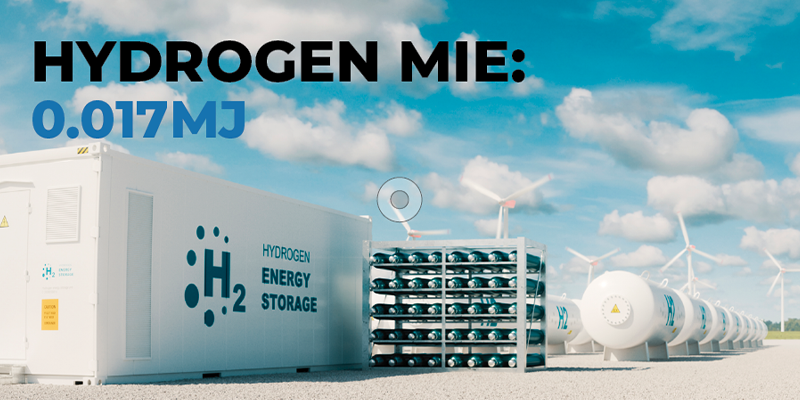
13 February 2025 | Axair Fans
ATEX Explosion Protection & Ignition Properties of Hydrogen Gas
Learn more about the importance of explosion protection measures in hydrogen applications, with the use of ATEX industrial fans.
Hydrogen technologies are undergoing a significant period of growth as widespread use is planned in the energy generation and production industries. Any structure that contains hydrogen components should be ventilated adequately to avoid ignition. Since hydrogen is lighter than air, it collects under roofs and overhangs.
The avoidance of ignition sources is one of the three basic measures for explosion protection: containment, segregation, and prevention.
The prevention of an explosion through limiting ignition sources is implemented using explosion-protected equipment. The design reduces the potential for the component to contribute as a source of ignition. Non-electrical equipment such as ATEX industrial fans with Ex H certified constructions are important components that must be selected correctly according to accurate hazardous area classifications.
Mechanically generated sparks or hot friction surfaces resulting from mechanical impacts caused by the rotating and stationary parts meeting for prolonged time periods, are considered in the prevention concept. This aspect is stated in ATEX legislation, requiring the safe and effective construction of components in permissible material pairings to reduce this ignition source.
Whether ignition of explosive gas mixtures can be caused by mechanical impact depends on many parameters. In addition to the materials involved in the impact, the ignition sensitivity of the fuel gases is important. Hydrogen is very sensitive to ignition with a very low MIE of only 0.017mJ. Therefore, Hydrogen is assigned to explosion group IIC in accordance with the low minimum ignition energy.
Hydrogen is less likely to cause a fire or explosion hazard in an open or well-ventilated space, but a problem arises when hydrogen gas is allowed to accumulate. If this is allowed to happen, there will be a risk of a flammable mixture building up. When a large amount of accumulated hydrogen rises and mixes readily with air, it creates an ignitable mixture that can result in flames or explosions. Hydrogen is flammable in air at a volume of 4-75% by volume.
The best practice to avoid accumulation is to determine where hydrogen leaks are likely to occur and how they may disperse, then ventilate accordingly to manage the airflows sufficiently to keep hydrogen concentrations below the lower flammability level (LFL).
Hydrogen has an auto ignition temperature of over 1000°F. The auto ignition temperature of a substance is the lowest temperature at which it will spontaneously ignite without the presence of a flame or spark. Hydrogens flammability range is very wide when compared to other fuels, but under the optimal combustion condition of 29% hydrogen: air ratio, the energy required to initiate hydrogen combustion is much lower than required by other fuels.
Hydrogen is a very small molecule with low viscosity; therefore, it is prone to leakage. Natural ventilation with vents at high levels in confined spaces will allow hydrogen to escape and quickly disperse into atmosphere safely.